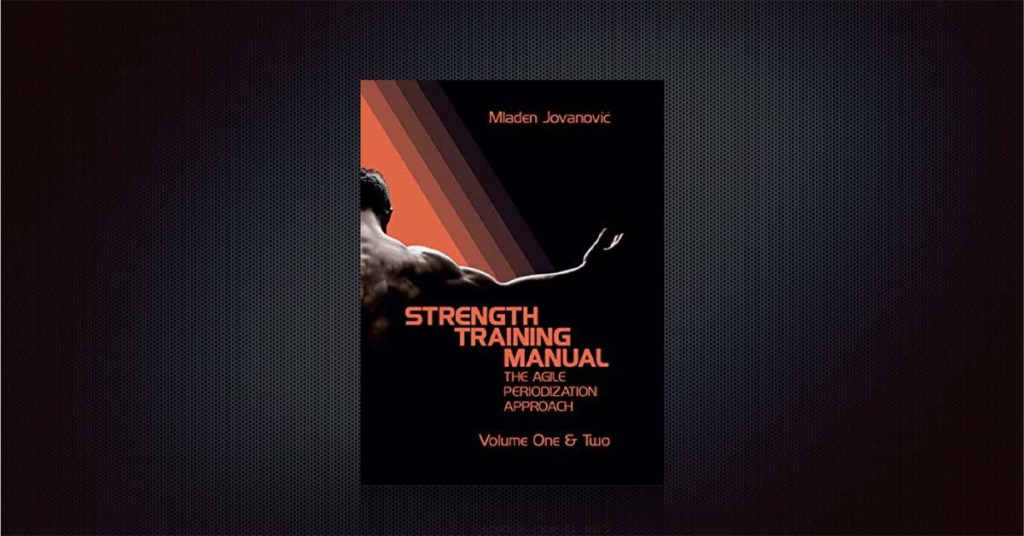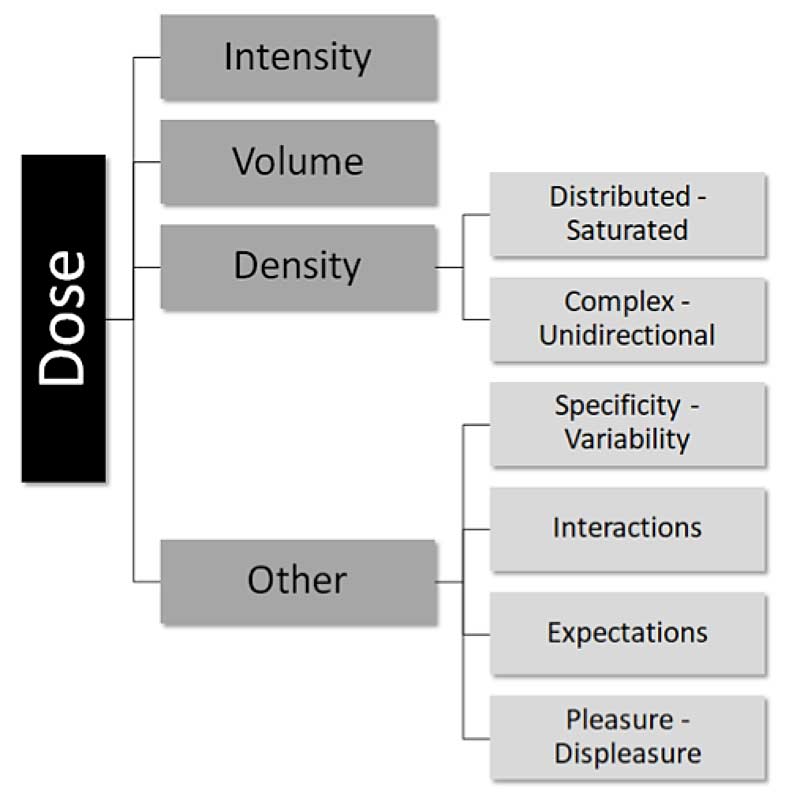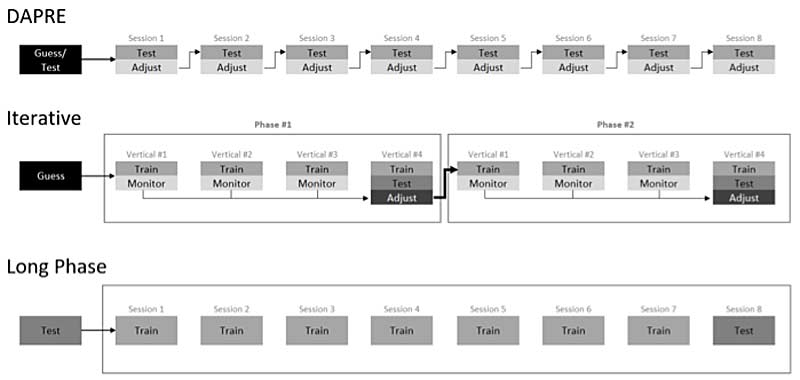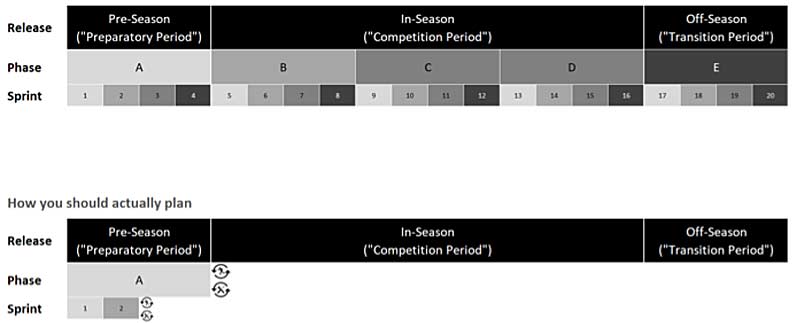
Mladen Jovanovic’s Strength Training Manual: The Agile Periodization Approach is an unconventional and creative perspective on planning and organizing strength training. This first book represents Volumes 1 and 2 of the full work and is, by the author’s admission, more theory-based. (He plans for Volume 3 to have a more practical application.) The evolution in the author’s writing, from his early articles to this latest text, is readily apparent.
Mladen is far more widely read and researched on topics such as statistics and philosophy than I am, but his articles, his social media, and this book make these topics and concepts more accessible to me and other strength coaches. As much as I believe I am knowledgeable in coaching athletes, training, and physiology, Mladen’s writing highlights how much more I have to learn in some (surprisingly?) related areas. This reinforces the messages of coaches like Stuart McMillan and authors like David Epstein who contend generalists will triumph in a specialized world. The author draws on many areas to inform and instruct his ideas and his approach to training, including philosophy, mathematics and statistics, business, and IT and the software industry.
No matter how smart or experienced we are as coaches, our mental processes will sometimes be wrong. “Agile periodization” is the concept of minimizing the downside. Share on XAll coaches utilize various heuristics, rules of thumb, or assumptions. However, no matter how smart or experienced we are, by their very nature these mental processes will be wrong from time to time. The major theme of “agile periodization,” introduced early in the manual, is the concept of minimizing the downside.
In statistical terms, we want these errors to be type I (underestimating) rather than type II (overestimating). At its worst, a type II error may be catastrophic (injury). A type I error may mean the athlete is undercooked from a training point of view, but they will live to fight another day. This a central tenet of agile periodization: the analogy of slow cooking the athlete with respect to strength training.

I have to be honest in that I personally found some of the first chapter dry and hard-going, but it is important to understand the thought processes and perspective of the author for the rest of the book. (Mladen admits “he is pretty sure going through this chapter was painful” for the reader.) I found myself re-reading several sentences or paragraphs to fully digest the meaning. The author provides examples of how this scientific, statistical, philosophical knowledge impacts his approach to planning and coaching, so it is valuable, and it is only one section of the book that helps set the scene for what follows in the three volumes.
Mladen’s personality comes through in the writing, which ensures some of the drier scientific text is more reader-friendly. The use of personal anecdotes, everyman language and stories, and self-deprecating humor makes for a more engaging read, which is essential for such a thick and concept-dense textbook. A picture speaks a thousand words. Although the book is thick and contains a lot of info, the text is regularly broken up with graphs and charts that succinctly illustrate the meaning of the associated text and make the information easier on the eye.
The Strength Training Manual provides novel takes on classical training theory. For example, it introduced me to Mladen’s adaptation of Dan John’s system of classifying strength training. (Check out the book for yourself if you, too, are unfamiliar with this.) Looking at existing problems from new perspectives can only be of benefit to us all and perhaps allows us to see new and alternative solutions to age-old questions and problems.
“One cannot jump phases,
the simplicity of an expert can be seen as the ignorance of the beginner.”
At a superficial level the book is a basic training manual: how to program training, how to select exercises, how to tackle important qualities. At a deeper level it gets you to think more intently about your training philosophies; what you believe is important and why. And, more importantly, to realize that while you have some guiding principles, you need to have an appropriate amount of flexibility in these principles to adapt to new situations and environments. Or at least to consider if your existing training mantra is robust enough to apply in situations and environments other than the one in which you presently operate.
This book makes you consider whether your existing training mantra is robust enough to apply in situations and environments other than the one in which you presently operate. Share on XThis is not to say you must go out and apply any of Mladen’s categorization methods. (The author himself cautions against doing this blindly; instead exhorting you to decide what is important for you in your situation.) It is merely a question to ask if you need to reconsider how you think about training programming and theory beyond the entrenched training lore.
The Strength Training Manual gives you an insight into the psyche of a practitioner who clearly thinks deeply about his craft and researches strength training and many related (some loosely, some more directly) fields. It is a great opportunity to peer into the mind of a creative and unorthodox thinker. For example, an important concept Mladen touches on is whether to employ a bottom-up or top-down approach to training. There are compelling arguments on either side of that debate. Purchase the book to read a comprehensive, reasoned analysis of this question from Mladen.
Volumes 1 and 2 are, again by the author’s admission, heavy on the theory side. But there are nuggets of wisdom from a practical perspective. For example, organizing training when equipment is limited and/or athlete capability or proficiency is mixed, or, for example, running multiple stations with varying dependency on coaching input.

There may be a dichotomy between the seemingly “optimal” program and the robustness of the program in a real-world applied setting (i.e., what happens when someone misses one of the optimal sessions?).
In the middle chapters the book perhaps dives down a few mathematical and statistical rabbit holes. Mladen introduces many novel ways of analyzing, interpreting, or classifying training methods. This can be daunting and confusing for the reader. But it can also be seen as a window into the complex and interconnected way he looks at physiological and training concepts—the plurality of the many small-world models, as Mladen likes to refer to it.
We must be cautious in applying small-world, scientific, optimal “truths” to the real world of athlete development. Share on XAs Mladen frequently points out, laboratory-based, scientifically “proven” constructs depend upon simplification of the real world into “small world” models that permit scientific rigor and validity. But it is for these very reasons that we must be cautious in applying small-world, scientific, optimal “truths” to the real world of athlete development. That is not to say this scientific data is not useful, but a reminder that it is only one piece of evidence-based practice rather than the whole story.

Agile periodization is characterized by the concept of “estimation through iteration,” and I see instances of this in my own coaching and programming methodology. An example of this may be the use of embedded testing to inform and guide subsequent training cycle loading. (Perhaps embedded testing is an intuitive deduction of experienced coaches?)
If you take even just one new idea away from a book, it has been worth the time invested. One such example here was introducing me to Paul Carter’s concept of pre-work sets. I have used some of these ideas in a small way before; for example, walking out and holding an even heavier weight before attempting a heavy squat. But I didn’t have a name for these methods and the “pre-work” sets described in this book encompass this and other ideas with which I haven’t yet experimented.
The final chapters present a comprehensive catalog of planning and programming routines alongside an equally exhaustive list of regulating systems (e.g., APRE) This could be both a strength and weakness of the text with the volume and detail of information perhaps overwhelming for some. This exposes the reader to a smorgasbord of options for organizing training sessions and cycles. But it could also lead to paralysis by analysis or variety for its own sake if they don’t have a strongly grounded training philosophy. (This supports Mladen’s own assertion within the text that it is perhaps more suitable for more experienced coaches who have a greater wealth of coaching experience to draw on when deciding what tools or methods to employ).

Toward the end of the text, Mladen provides the example in figure 4 of how agile periodization compares and contrasts with traditional periodization and annual planning. The overarching philosophy is to know where we are heading with respect to the ultimate training goal and destination, but to only plan one or two cycles into the future. Here I see strong parallels with Stuart McMillan’s “micro dictates the macro” ideology. (When several intelligent people say similar things, there’s a good chance they are onto something!)
Not Easy, but Worth It
I am paraphrasing here, but a simple synopsis of the content and message of the manual could be as follows: rather than trying to write the optimal program, try to find the most robust solution that will satisfy your aims when assumptions are proven wrong.
To paraphrase, rather than try to write the optimal program, try to find the most robust solution that will satisfy your aims when assumptions are proven wrong. Share on XDon’t expect an easy read with Strength Training Manual: The Agile Periodization Approach. As with most things in life, you only get out of it what you put in. Invest some time reading the book and ruminating on the information it contains. You are sure to be rewarded with new insights and invaluable training knowledge and personal reflections.
This first book, consisting of Volumes 1 and 2, contains a fairly comprehensive collection of training planning and progression strategies. If nothing else, it may serve as an extensive reference resource for creating your own training templates. Mladen promises more to come in Volume 3.
Since you’re here…
…we have a small favor to ask. More people are reading SimpliFaster than ever, and each week we bring you compelling content from coaches, sport scientists, and physiotherapists who are devoted to building better athletes. Please take a moment to share the articles on social media, engage the authors with questions and comments below, and link to articles when appropriate if you have a blog or participate on forums of related topics. — SF


Sounds fascinating. Having been involved in sports, fitness and strength training since the early 1970’s when they said lifting weights were bad for you, I played, coached and officiated football, wrestled and played rugby and DIII Football. i later lifted in what was club power lifting in the beginning of the PED ERA. I was a member of the NSCA back then and used the pyramid method in training.
I will be very interested in reading and understanding this material.